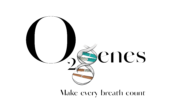Oxygen For Kids & Babies
Only the best is good enough
Oxygen gives you unlimited energy
Ever wonder why your child has so much energy?
It’s because they get more oxygen.
Babies and children breathe faster than adults. babies take a breath about 40 times per minute while adults only breathe around 12-20 times per minute.
Children under the age of 7 or 8 are able to utilise their entire lung capacity and hence are able to take in more oxygen that can be eventually converted into energy. They don’t just breathe faster than adults, but also literally breathe in more air due to larger lung surface area with proportion to weight. Their breathing is so full and complete that oxygenated blood is able to reach all parts of their tiny bodies which gives them enough energy to bounce off walls!
Shortness of Breath in Kids
When kids play or exercise too hard, they tend to breathe quickly, shallowly and often, through their mouth instead of their noses. While this may not be a cause for concern all the time, some kids may experience Exercise-Induced Asthma (EIA). Children with EIA may get winded or feel tired easily during or after exercise.
For kids who are under the weather, breathing can be a struggle. Common colds or flu can lead to stuffy noses that block their airways and make it difficult for them to breathe through their nose. When breathing is impaired, their oxygen levels are significantly impacted as well.
*Some signs and symptoms of respiratory distress in kids include:
- Increased work and effort to breathe
- Increased heart rate
- Increased breathing rate
- Colour changes: appear grey, blueish
- Grunting when breathing out
- Nose flaring
- Wheezing
- Sweating (cool or clammy skin, skin does not feel warm to the touch)
- Stridor (sound heard in the upper airway when your child breathes in)
- Accessory muscle use (neck muscles move when your child breathes in)
- Lethargy and lack of alertness
*If your child shows prolonged signs of the above respiratory distress symptoms, do consult a paediatrician for a complete diagnosis.

Shortness Of Breath In babies
It’s been estimated that between 4-23% of babies will have insufficient oxygen at birth. The normal oxygen saturation level for a baby should be around 95-100% and levels that fall under 90% are considered too low.
Unlike older kids who are able to breathe with both their noses and mouth, babies are obligate nose breathers. This means that they only breathe through their nose until they are 3-4 months old. Due to this physiological necessity of nose-breathing, even the slightest nasal congestion can significantly affect their breathing and oxygen levels.
*Signs of low oxygen levels in babies include:
- Bluish tint to the skin
- Apnea (pause in breathing for 20 seconds or longer)
- Heart rate that’s less than 60 beats per minute
- Seizures
- Lethargy
*If your child shows prolonged signs of the above respiratory distress symptoms, do consult a paediatrician for a complete diagnosis.

How to help your child/baby?
For many young children who experience shortness of breath either due to EIA or sickness, they may panic when they struggle to breathe. Supplemental oxygen can help them to find immediate relief and calm anxiety when that happens. The act of breathing from the canister also forces them to breathe consciously through their noses.
Boost Oxygen is made up of 98% oxygen and is a portable canister that can be brought to any playground or park that you bring your child to play or explore at! The shape of the breathing mask is also straightforward and easy to use for babies and young children alike.
Regulated by the Consumer Product Safety Commission, Boost Oxygen is safe for babies and kids.
Conclusion
Supplemental oxygen is a non-invasive and effective way of providing immediate relief to babies and kids when they need that extra help.
Boost Oxygen is not a medical tool and cannot be used to substitute for any necessary medical treatment in a situation where your child may have an underlying, or more serious matter.
